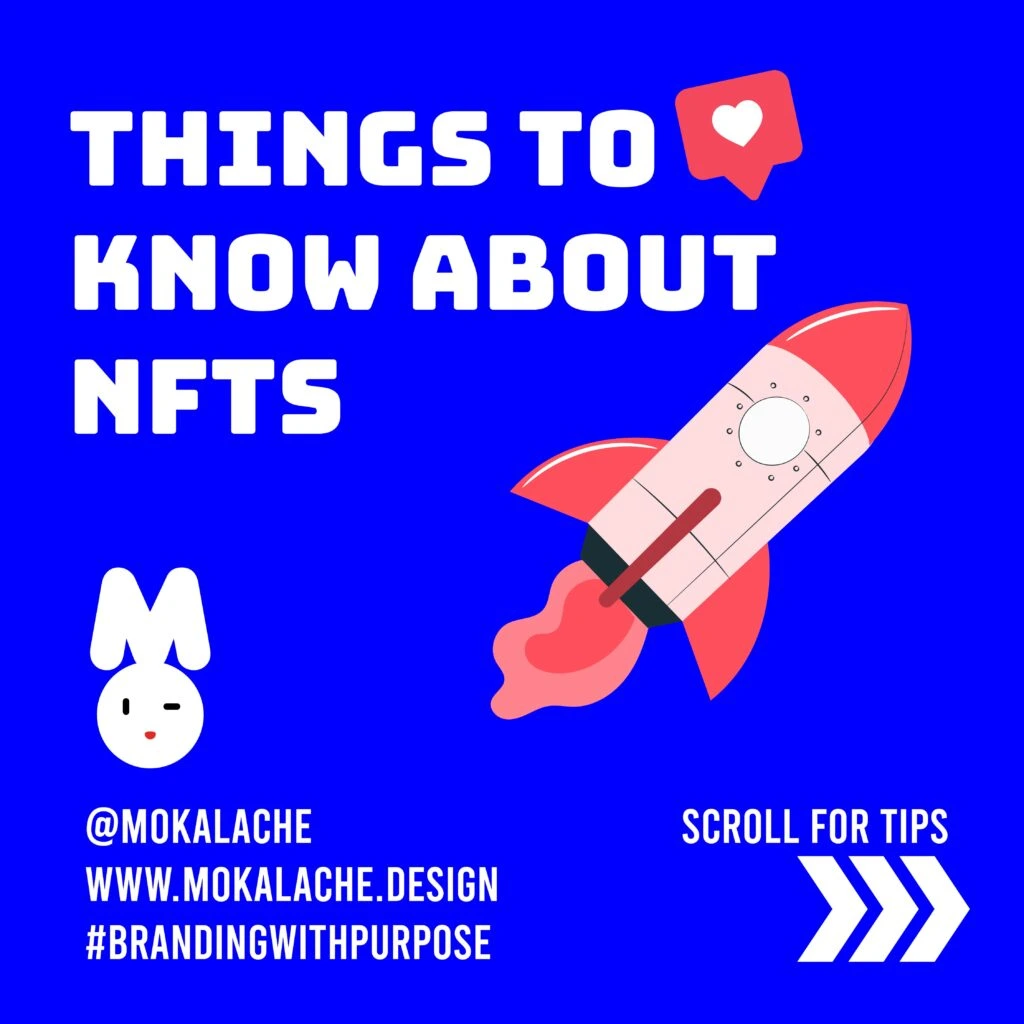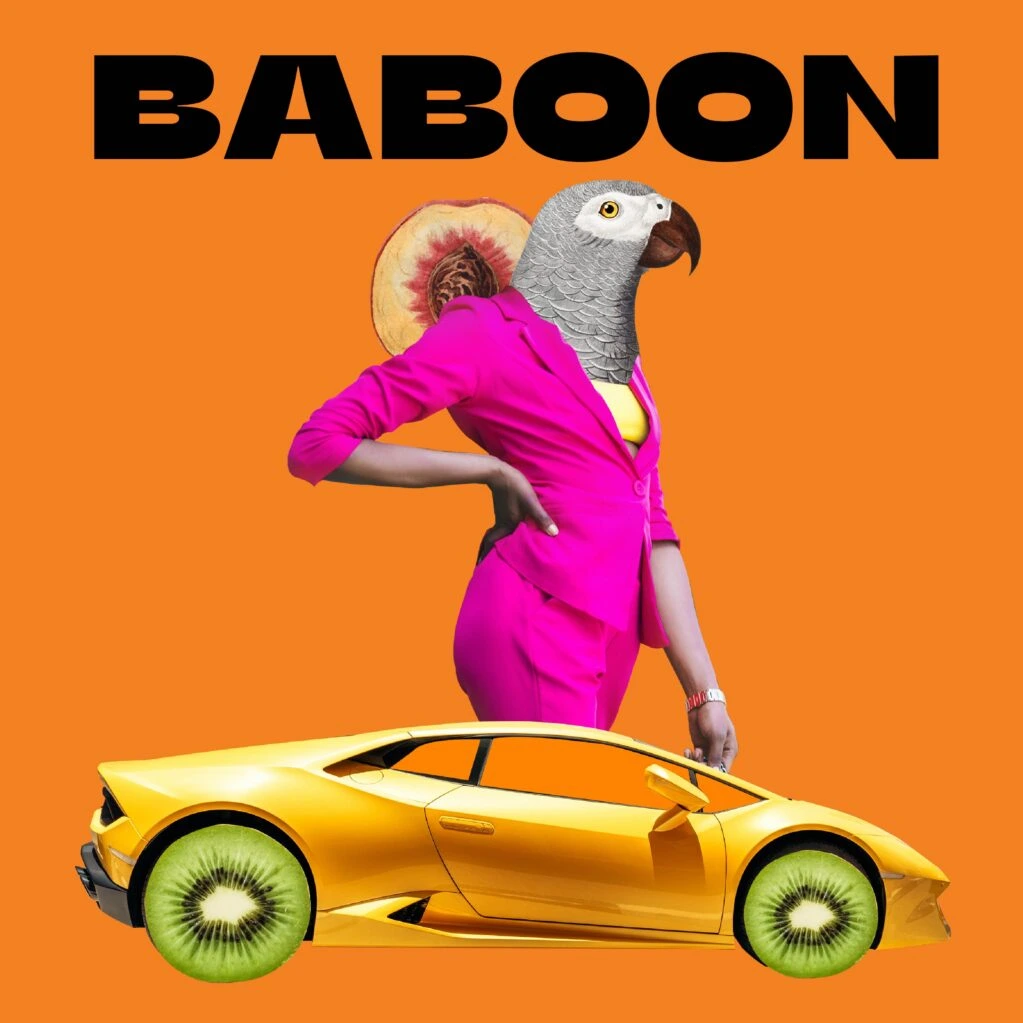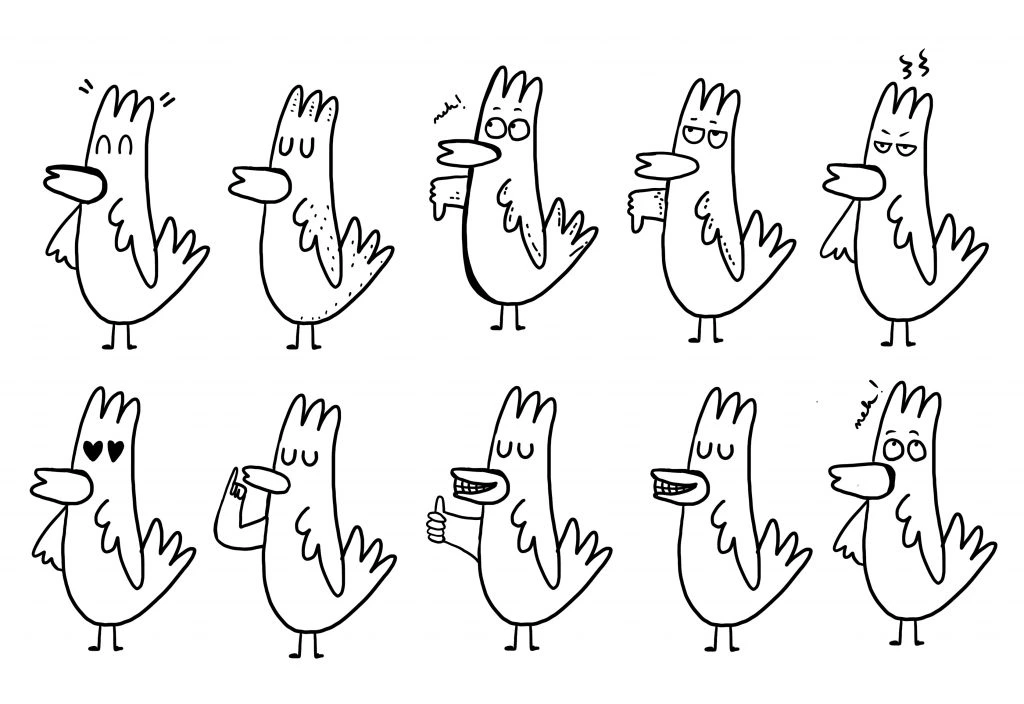
Interesting times we are living in when a digital asset has so much value! If you don’t know about NFTs yet let me shed a light with this post.
Questions I have been getting lately about NFTs, crypto art 🖼 and decided to create this post to shine a little info. Feel free to share it with whoever is interested and let’s keep the NFT art community strong 💪🏽💙❤️⭕️👋🏼 #mokalache
What is NFT
NFT stands for Non-Fungible Token. A fungible token is something that can be swapped out with another. An example of a fungible token would be Bitcoin or Ether.
NFTs, however, have a few interesting properties. The main difference is that an NFT can non-interchangeably be swapped for another.
An excellent example of this would be Mokalache’s unique body, soul, and technology NFTs Design. Each one has a different genome, and their genomes are unique to each other in the same way two human beings’ DNA are unique from each other – they are not fungible.
Because of this unique property, they can be used to represent ownership in a digital medium. You could have a Mokalache NFTs that represents your house or your Tesla, for example. If you sell the ownership of the NFT, then whoever buys it owns the car or the house – and not only do they own the car or the house, but they also inherit whatever is recorded on top of it – all your Mokalake NFTs that represent the title and ownership of your new house as well as any memories you had there would go with them.
NFTs can be used to create crypto collectible items such as Mokalache NFTs designs, Cryptopunks and CryptoPets. NFTs can also represent digital certificates such as diplomas or degrees of an accredited university.
NFTs are a new type of cryptographic token that is representative of something unique on the web; these tokens are unlike any other in existence on the market today. They do not behave like traditional cryptocurrencies, but have a unique set of properties that provide them with the functionality to represent real-world assets.
It is a new type of token that is also a platform unto itself.
Nft Provide Sole Ownership Of Digital Art And Collectibles
NFTs provide a secure and transparent way to own digital assets. They are cryptographically-secure, meaning that they can be verified and tracked on the blockchain. This makes them ideal for storing digital art and collectibles, as it guarantees that they cannot be stolen or copied without permission.
Moreover, NFTs can be used to create unique experiences that are not possible with traditional assets. For example, an artist could create a digital artwork and sell it as an NFT. This would give the buyer exclusive ownership of the artwork, and they would be able to do whatever they want with it, including displaying it on a website or even printing it out.
NFTs are also perfect for collecting digital collectibles. For example, a gamer could purchase an NFT that represents a rare in-game item. This would give them ownership of the item and prevent other gamers from accessing it.
NFT Creates Scarcity And Designates Digital Creation As The Original.
NFT’s define digital assets as scarce and unique. They are created by their owners, which gives them value that can be exchanged within the NFT ecosystem or outside of it for goods and services granted by other users.
Digital creation is preserved in the originality of its storage location (e.g., blockchain) – once recorded on a network, the data can never be erased without leaving a trace. This immutability is at the heart of NFT’s and is what differentiates them from traditional digital assets. For example, when someone copies or redistributes an MP3 file, the original no longer exists – it has been duplicated. With NFTs, the original still exists and can be sold and traded independently of the copy.
This attribute creates a new market for digital collectibles, which aren’t limited by physical qualities such as scarcity and finite distribution yet retain inherited traits from traditional collectibles such as inherited value through time.
NFT All Artwork Can Be Traced Back To The Original Creator
One of the great things about NFTs is that they can be traced back to the original creator. This means that all artwork on the blockchain can be authenticated, and any disputes can be easily resolved. This also ensures that artists receive proper credit for their work.
NFTs are also a great way to reward artists for their work. Now, when someone likes an artist’s work they can send them a tip in the form of NFTs.
Now that you know what NFTs are and some potential use cases, it’s time to learn how to invest in them!
Heavy Impact Of Mining Process
Auction Houses Have Broken Records Of Selling NFTs In The Art World
How To Invest In NFT?
There are a few different ways to invest in NFTs. The most common way is to buy tokens from an exchange. However, not all exchanges list NFTs yet. Another way to invest in NFT is by directly owning the token.
Investing in an exchange-listed NFT:
- Open account at an NFT Market
- Create a digital wallet
- Buy Crypto
- Setup a metamask account
- Transfer Crypto from your wallet to your metamask account
- Buy NFTs
How Do You Know If Your NFT Is Good?
This is a tricky question that gets into a few different areas. First off, you can’t know if a specific token is good. At best, an NFT represents something in the real world and it’s up to you to do your own research on what that something might be. If it promises great returns or otherwise seems too good to be true, it’s likely a scam.
When you’re doing your research, one thing to keep in mind is that an NFT could represent something non-tangible or digital that can have value.
Another thing to note is that if something promises gains or rewards for token holders, it’s likely a scam. This isn’t always the case as some NFTs out there have been awarded recently, so you should do your research on what it is you’re buying before purchasing.
What Is A Tokenization Platform?
A tokenization platform is a blockchain-based system that allows users to create NFTs for specific assets they own – which these tokens can be either bought and sold back on the open market. The benefit of these platforms is that they reduce the legal and technical costs associated with creating digital representations of physical goods.
What Are NFTs Used For?
Tokens are created on specific platforms based on what it represents. For instance, Cryptokitties was built using Ethereum’s ERC-721 standard, which is a tokenization platform that allows users to create unique collectibles.
These collectibles can be sold and traded on the open market, essentially creating a marketplace for these “crypto collectibles.” Other NFTs allow owners to manage and transfer data in new ways.
Is Bitcoin an NFT?
Bitcoin is not an NFT because it is not tied to any real-world assets. Bitcoin also does not have a set supply – it is a finite cryptocurrency whereas NFTs are non-fungible tokens with a fixed supply to represent real-world goods and services.
Why Do People Buy Crypto Collectibles?
There are many reasons why people purchase crypto collectibles, but the most popular reason is the potential of future returns. When you buy crypto collectibles, you are essentially buying a digital asset with no real-world value attached to it – which means that its only value lies in its ability to be sold for an increased price at some point in the future.
These types of assets are often called “digital collectibles” since the digital asset has future potential value if the user decides to increase its price.
What Is A Utility Token?
A utility token is something that gives you access to services within an app or platform, but it can’t be traded outside of that platform – which means that all tokens are non-fungible and represent unique services within their platform (and most of them can’t be purchased with fiat currency).
Is Nft The Same As A Security Token?
Not all cryptocurrencies are considered utility tokens. There are some that represent ownership in an asset, like securities and real estate – which means they meet the definition of a security and fall under federal regulation.
Companies that issue security tokens are required to follow strict federal guidelines and make sure they don’t break any laws. If a security token breaks the law, all users of that platform could be held accountable. Security tokens are currently regulated under the Howey Test, which states that an asset can be considered a security if it is being bought on the promise of future returns and/or the asset’s value is tied to profits generated by a common enterprise.
Who Regulates Nfts?
Currently, the United States’ federal government does not regulate crypto collectibles. That means that anybody can create and trade them without having to worry about breaking any laws – which makes it easier and cheaper to create these digital assets. However, there are some states that have formed their own regulations – which is notable for virtual goods and services where the majority of collectibles fall under the category. In California, for instance, a bill was passed that would require a state-issued permit before selling crypto collectible tokens in an effort to prevent money laundering, scams, and tax evasion.
What Are The Benefits Of Crypto Collectables?
Crypto Collectibles can be used to tokenize real-world assets to simplify management. It also reduces fees associated with enforcing contracts across multiple parties when it comes to things like loans or rentals – which is why there may be an increase in the creation of crypto-collectables in the future.
At the End:
If you’ve read through this blog post, then hopefully you have a better understanding of NFTs. Not only are they not securities, but they can be used for different purposes in your industry. You may want to use an NFT tokenization platform or create one yourself if that is the case! As always, we would love to hear from our reader and learn what their thoughts about these emerging technologies are – feel free to let us know below in the comments section.



